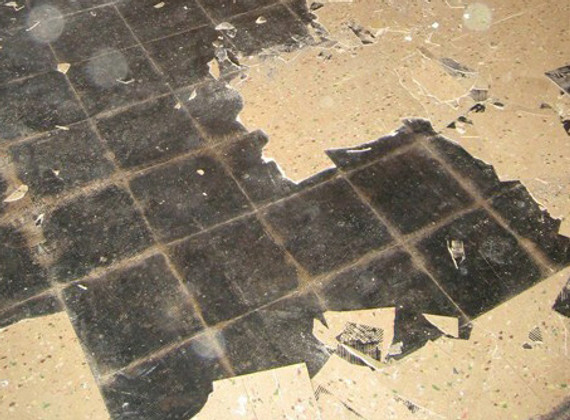Posted by Ashley Peden on May 14th 2020
Removing an existing substrate to make way for a replacement is an everyday occurrence in our industry.
When removing old flooring, a coating of adhesive is often left behind. It is important to remove the existing adhesives to allow a successful installation of the new substrate. Even further, polished concrete has become popular in recent years in which case the adhesive will need to be removed first to expose the original concrete surface. Before starting the removal of the flooring adhesives, some questions to have answered are:
What type of adhesive is it? Does it contain asbestos? How can I remove this?
In residential and commercial structures built pre 1980’s, black mastic that contains asbestos was commonly used to bind carpet, vinyl, and tile flooring to concrete and wood sub floors. Asbestos is a highly fibrous material. It was used in many products at the time to strengthen them and to add fire-resistance. Some tiles and vinyl sheet flooring from this time period also contain asbestos. It is important to have the material tested before beginning any removal. If these materials contain asbestos, it should be removed by a trained professional contractor that will follow all provincial asbestos removal regulations which include appropriate personal protection and may also include enclosures to control airborne contaminants.
Two common ways to remove flooring adhesives are chemically and mechanically.
CHEMICAL MASTIC REMOVERS have come a long way. In today’s market, there are low and no odour options available to reduce VOC’s, making the removal process safer. A common product being used is soy based mastic removers. Solvents created from a soy base offer a non VOC, biodegradable option. There are also solutions created specifically for carpet adhesives.
In the chemical removal process, the mastic remover is applied to the area. Depending on the type of mastic being removed, dwell time from 1 to 8 hours is required. The mastic will start to liquefy, at which time it can be removed from the surface with a floor scraper or squeegee. Following the use of these mastic removers it is important to clean the surface thoroughly with a degreaser to remove any chemical residue. If this step is missed it could prevent any new substrate being installed from bonding to the subfloor. Chemical removal is an inexpensive option for the removal of mastic limited only by dwell time, clean up time and the manual labour required.
MECHANICAL REMOVAL of flooring adhesives using a concrete grinder is becoming a more common solution. These machines use diamond cutting blocks to remove the adhesives and level out the sub floor. Mechanical removal offers a faster solution for larger square footage with less manual labour.
While this process sounds like a no-brainer, it is important to keep in mind that some adhesives are easier to remove than others. When removing mastics that can become gummy, applying clean sand or kitty litter to the surface before grinding will cause the mastic to clump, easing the process. The key to successful removal is the correct diamond tool selection.
Whether you choose a chemical or mechanical removal process, the team at Safety Express is here to help. With a comprehensive chemical offering, rental and sale of grinding equipment, and all necessary site and personal protection, make Safety Express your one stop for adhesive removal solutions!




















